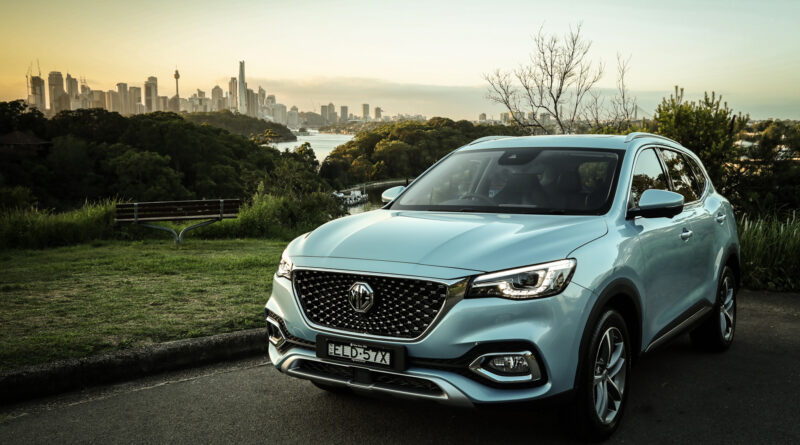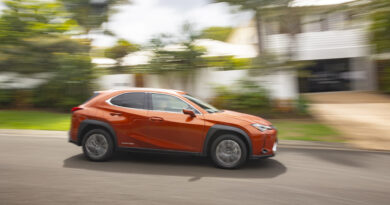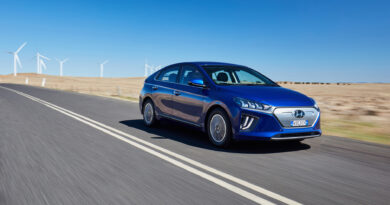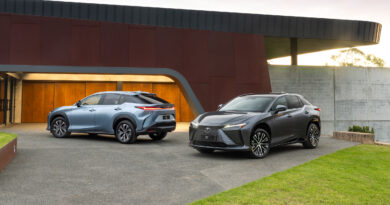2021 MG HS Plug-in Hybrid review
MG is on an electric mission to make “EV for everyone”. In 2020 it unleashed what was the cheapest electric car on the Australian market, the ZS EV. Now MG has begun selling its first plug-in hybrid car, the HS PHEV.
Based on the HS mid-sized SUV and using that car’s body and design, the Plug-in Hybrid version has added electric oomph beneath the skin.
The HS PHEV is not the cheapest plug-in on the market – that honour goes to the Hyundai Ioniq PHEV, for now at least – but it is the most affordable PHEV SUV (and the only EV that undercuts it is MG’s own ZS EV).
As with all PHEVs, the HS teams a regular engine with an electric motor, allowing for EV-only motoring but with a petrol engine as backup to boost performance and extend how far you can drive.

Its most obvious rivals are the Mitsubishi Outlander PHEV and the Ford Escape PHEV that’s due late in 2021.
Whereas the Mitsubishi drives all four wheels using two electric motors, the MG sends its drive only to the front wheels with a single e-motor.
Some will also no doubt compare the Toyota RAV4 Hybrid, which is not a plug-in hybrid but promises big fuel savings at a more affordable price.
Value: MG HS Plug-in Hybrid
Pricing for the MG HS PHEV is officially $45,990 plus on-road costs, although the car is offered for sale at $46,990 drive-away. It’s available in four metallic colours, including Clipper Blue (pictured here) that is reserved for MG’s electrified models.
By way of reference, the rest of the MG HS front-wheel drive range is priced between $29,990 and $40,690 drive-away.
It’s the $38,990 Esesence and the $40,690 Essence Anfield that the HS Plug-in Hybrid is closest to on equipment levels, mimicking each almost identically.
Standard fare includes 18-inch wheel, panoramic sunroof, dual-zone ventilation, 360-degree camera, smart key entry, powered tailgate, ambient lighting, heated front seats and leather-clad powered front seats (the rear seats are covered in fake leather).
There’s also Apple CarPlay, Android Auto and satellite-navigation as part of the 10.1-inch central infotainment screen and a 12.3-inch digital instrument cluster.
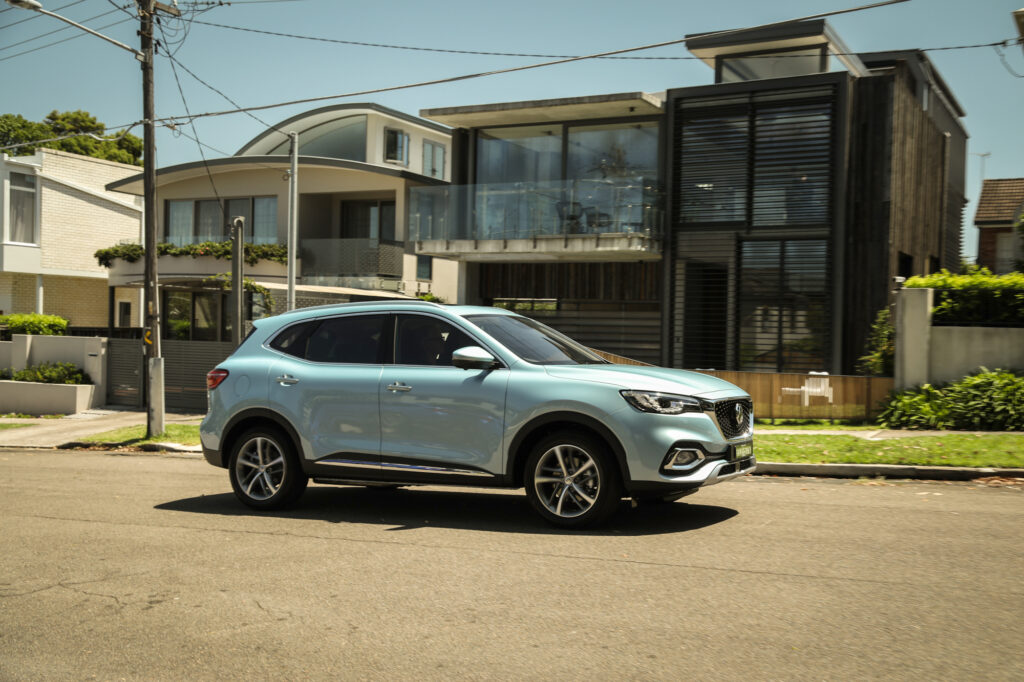
About the only thing the HS PHEV misses out on is a spare tyre. Whereas other HS models get a spare beneath the boot, for the Plug-in Hybrid that space is taken with batteries and a storage container for the included charging cable that plugs into a regular 230V powerpoint.
One area the MG HS PHEV takes a step back against other HS models is its warranty; whereas MG heavily markets its seven-year warranty, for the HS Plug-in Hybrid the factory coverage is reduced to five years with no limit on the kilometres.
Inside the MG HS Plug-in Hybrid
The HS is a mid-sized SUV and its dimensions closely match those of the two top sellers in the category, the Mazda CX-5 and Toyota RAV4.
So it’s a practical SUV and one with broad appeal, from singles and couples through to families.
There’s ample space up front and the usual array of storage options.
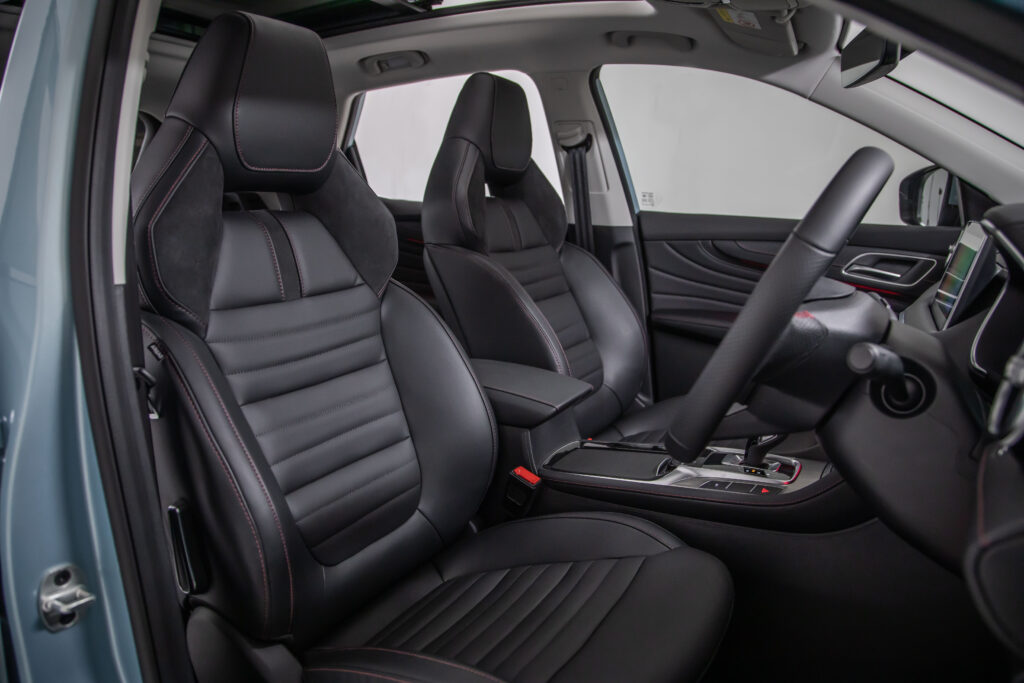
Everything is placed logically and the front seats are relatively supportive.
However, the main infotainment screen has some quirks. On its home screen are three panels, one for audio, one for navigation and one for ventilation.
To select Apple CarPlay you need to be back at that home screen then push the icon in the bottom right corner. If you’ve selected radio or nav, for example, you’ll first need to press the physical main menu button to get back to the home screen before dialling up CarPlay.
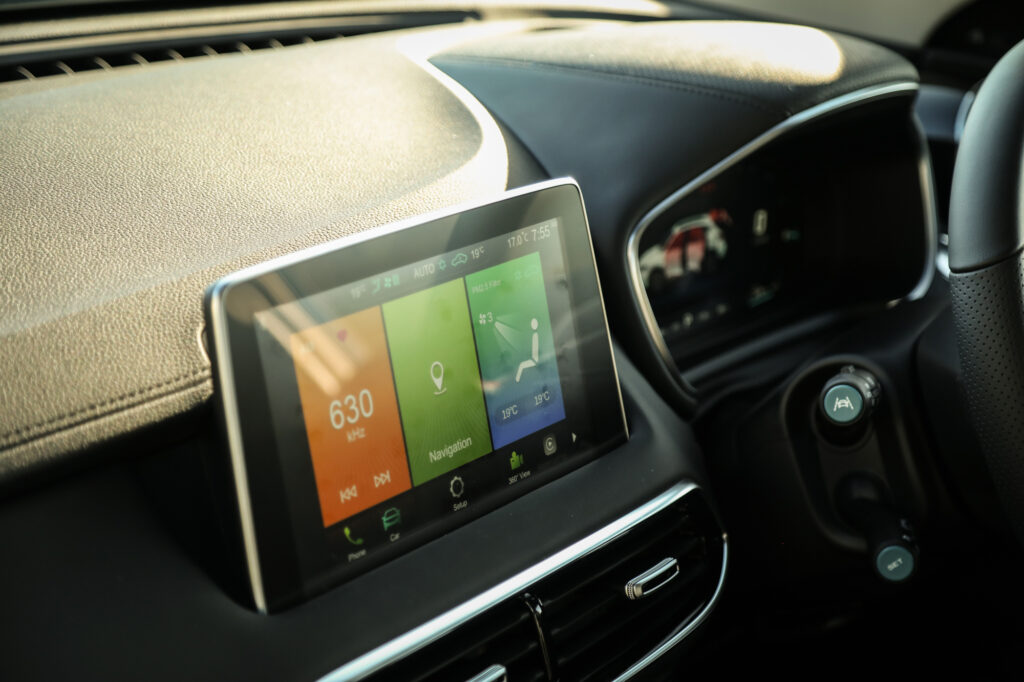
Instead of a volume dial there’s an up and down button to adjust loudness, which is not as slick or quick as a knob.
Red stitching throughout adds class and overall the finishes are upmarket. A small strip of fake suede on the seats is a nice touch and those in the rear get map lights within the overhead grab handles.
Two rows of seats accommodate up to five people, although it’s a far happier environment with four on board.
In the rear you’re sitting quite low, which brings the advantage of terrific headroom. Toddlers may not be as smitten by the relative height of the windows, although elsewhere it’s a child-friendly environment, especially with another pair of USB power outlets in the back to match the two up front. There’s also a folding arm rest with cupholders and storage, plus its silver finish matches the ambience up front.
Rear air vents keep fresh air headed aft, too.
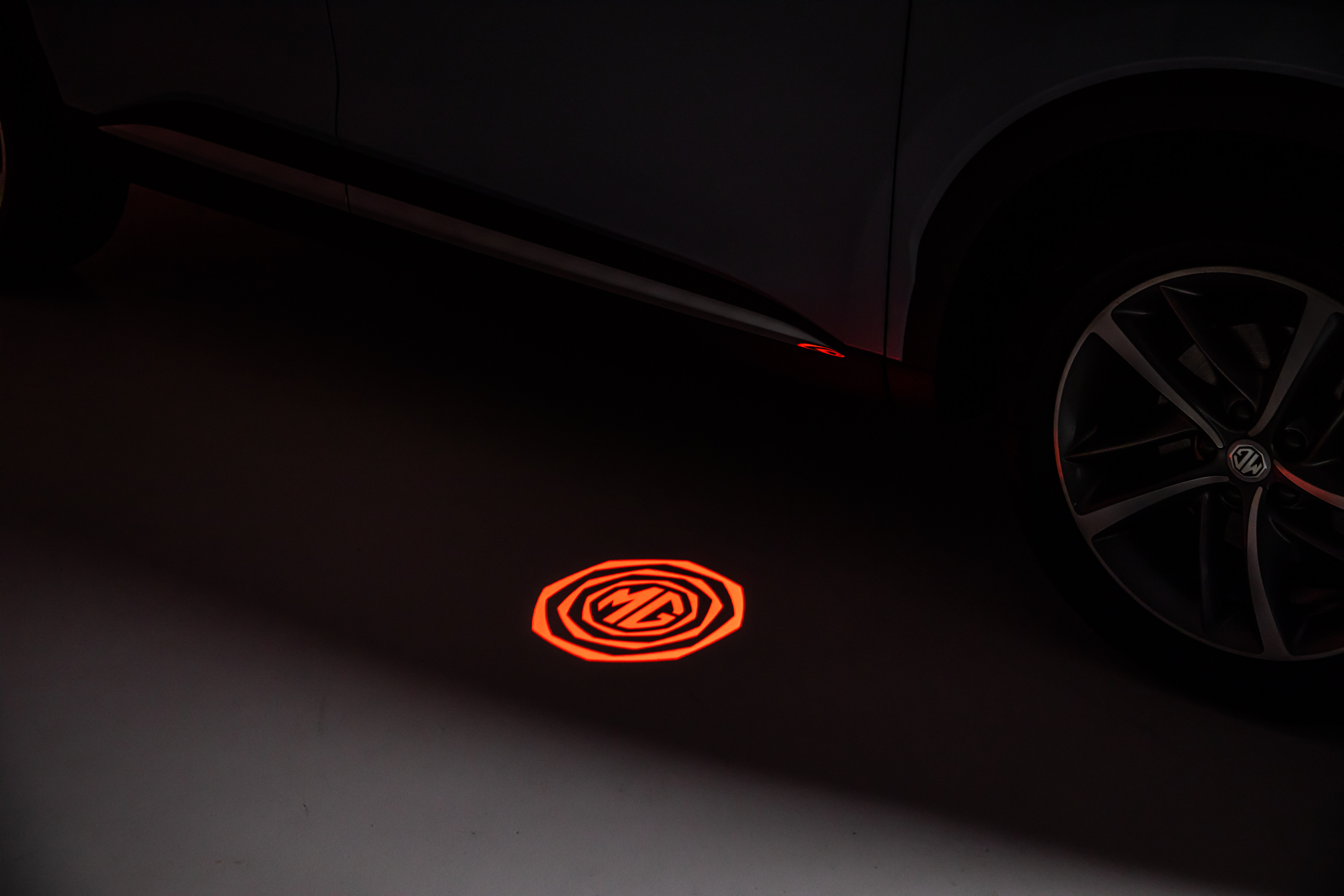
Leg room is also generous and a couple of adults in the rear wouldn’t be fussed with long range comfort.
The panoramic sunroof is indicative of the efforts in adding heaps of equipment and while its mesh blind doesn’t completely block out sunlight it does keep most of the heat away.
Performance and efficiency
The Plug-in Hybrid gets the same 109kW/250Nm 1.5-litre turbo as the regular HS but with the addition of a 90kW/230Nm electric motor.
The combined outputs are 189kW and 370Nm, which is none too shabby – and a big step up from the regular HS. It’s also claimed to reach 100km/h in 6.9 seconds.
But during our drive it never felt that quick. To be fair, we never tried a flat-out acceleration run with any decent amount of charge in the battery pack.
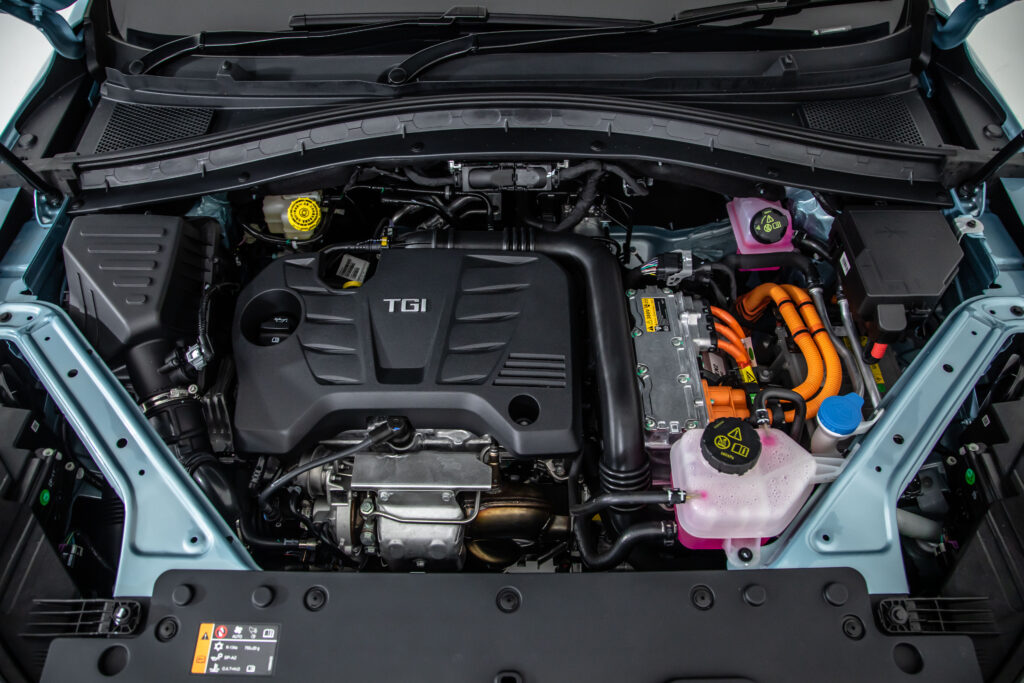
Instead, our drive started in electric mode, something you select by pressing the EV button near the gear selector.
Acceleration is thoroughly respectable and the HS Plug-in had no issues maintaining a 110km/h freeway cruise relying solely on electrons.
There’s the occasional hesitation as the transmission shifts gears (there are four separate ratios dedicated to EV mode, as well as six ratios devoted to the petrol engine) but otherwise there’s plenty of effortless pull that EV motors do so well.
Our drive wasn’t entirely representative of how most will use the car, involving some city crawling before unleashing it at 110km/h on a freeway.
The battery started on 75 percent charge and took us about 40km before reverting to petrol, so the 52km EV claim seems within reach.
But it’s in hybrid mode where the full 189kW and 370Nm is available.
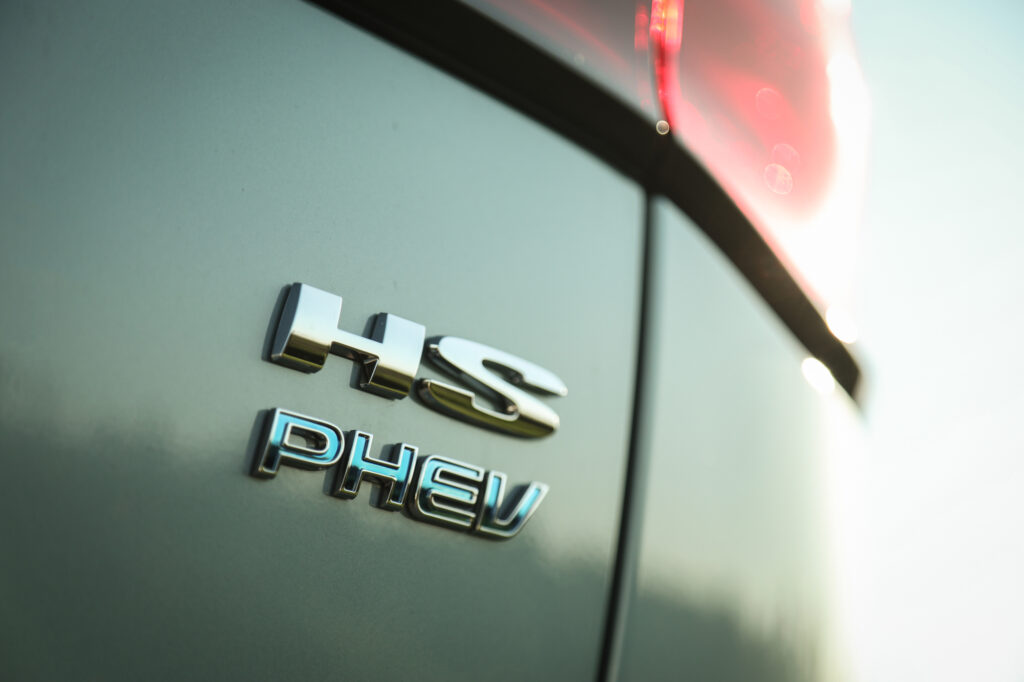
There’s a seamless transition to petrol, the engine grumbling to life but in a muted, subtle way.
Punch the accelerator and there’s more pull, the two power sources providing more muscle, albeit with caveats.
It’s at its most vibrant up to about 50km/h, at which point the power gauge that fills the instrument cluster in lieu of a tachometer briefly indicates 100 percent (it rarely gets near that at higher speeds).
Power out of a T-intersection or around a corner at low speeds and the inside tyre can chirp as it fights for traction, some associated torque steer (or steering wheel tug) the first hint the HS doesn’t have the dynamic smarts to deal with such challenges.
Then there is the occasional hesitation and pause as the transmission shifts gears. MG says there are 10 ratios to choose from: the six in the regular automatic transmission for the petrol engine and another four embedded in the electric drive unit that houses the electric motor.
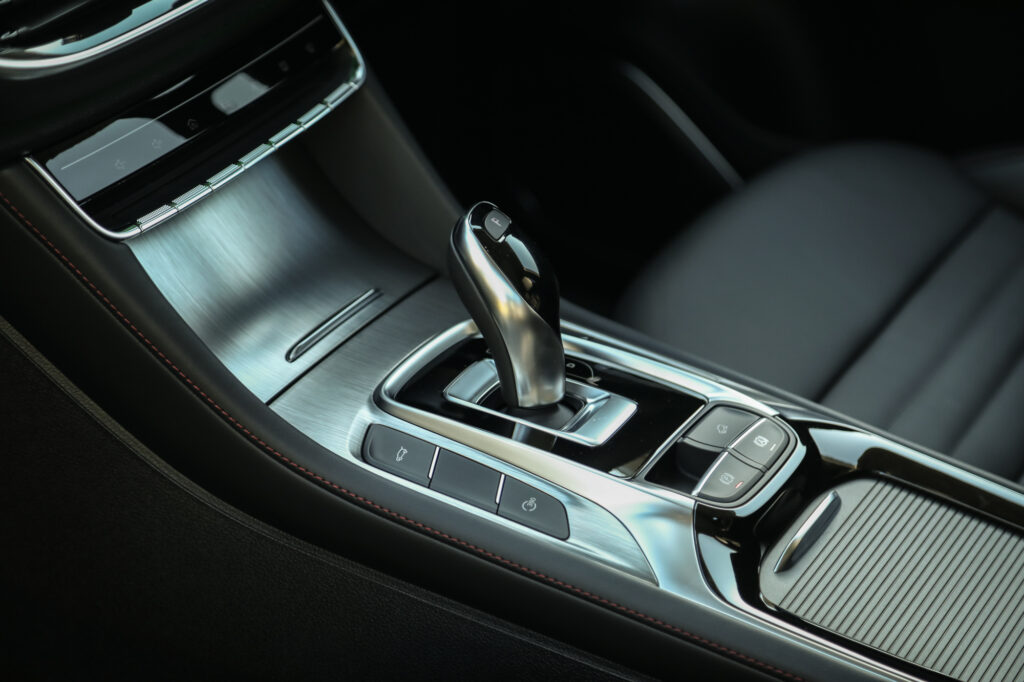
It’s difficult to ascertain which ratio is being used when and which of those transmissions is doing the shifting, although it’s not difficult to catch it out. The car often takes a moment to collect its thoughts and select the right ratio, something more noticeable if you’re already moving and you suddenly call on a burst of power.
The official fuel consumption is 1.7 litres per 100km but that’s academic.
In electric-only driving you’ll use no fuel, our brief stint suggesting electricity consumption of around 24kWh/100km.
And once you’ve depleted the battery pack consumption jumps. We reset the trip and it indicated something north of 8.5L/100km for a mix of freeway and city running.
Charging
There’s no DC charging for the HS PHEV, with all charging done using slower AC current.
That’s no biggie given the battery is only 16.6kWh in capacity. Overnight home charging is easily done in about 7.5 hours from a regular powerpoint.
MG cheekily says the HS Plug-in Hybrid can be charged via a 7kW wallbox charger, which is technically true. But… it will only use 3.2kW of that.
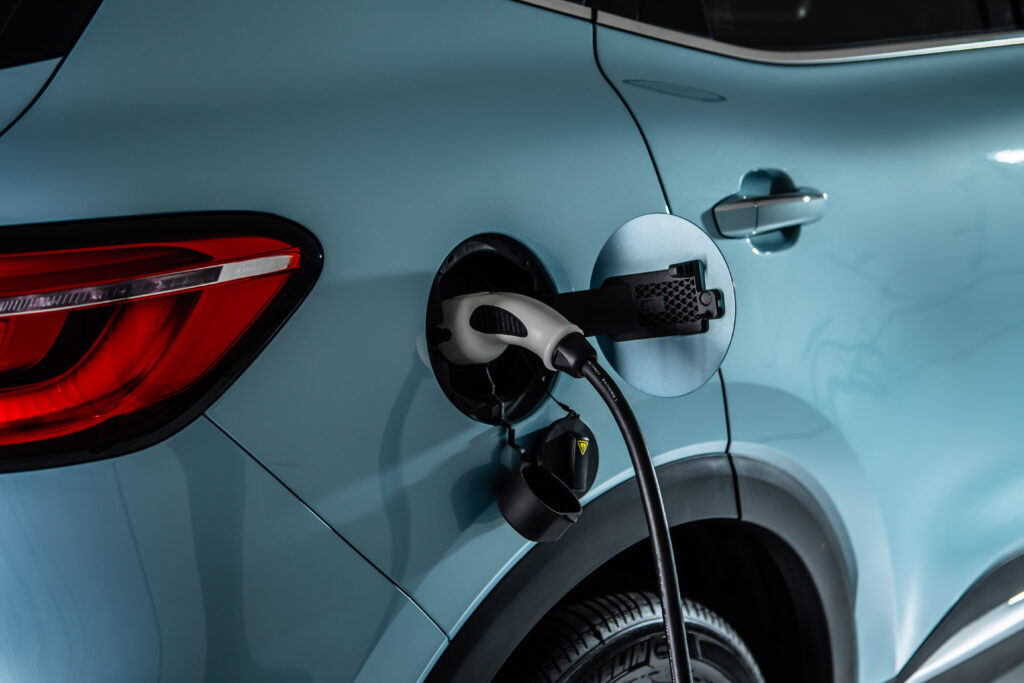
Considering a regular powerpoint provides 2.3kW, there’s hardly an incentive to splash out on having a wallbox fitted at home, especially when it only lowers the charge time to a little over five hours.
We’re guessing most people will be parking the car overnight and the extra two-and-a-bit hours won’t make the slightest difference.
Considering MG includes the required hardware for home powerpoint charging, it’s even more of a no-brainer.
Keep the (slightly) faster charging for shopping centres and other public chargers with a Type 2 plug.
And you’ll have to accept the fact that for longer trips you won’t be able to make use of those faster charging points, instead relying solely on petrol.
Speaking of which, MG claims 52km from that 16.6kWh battery and it seems close to the money.
And while the official fuel figure is 1.7 litres per 100km, expect to use almost five times as much once the battery has been depleted.
Ride and handling
It doesn’t take long to establish the HS PHEV is more about relaxed suburban motoring than carving up corners.
At around 250kg heavier than the ICE HS the PHEV has plenty more to contend with.
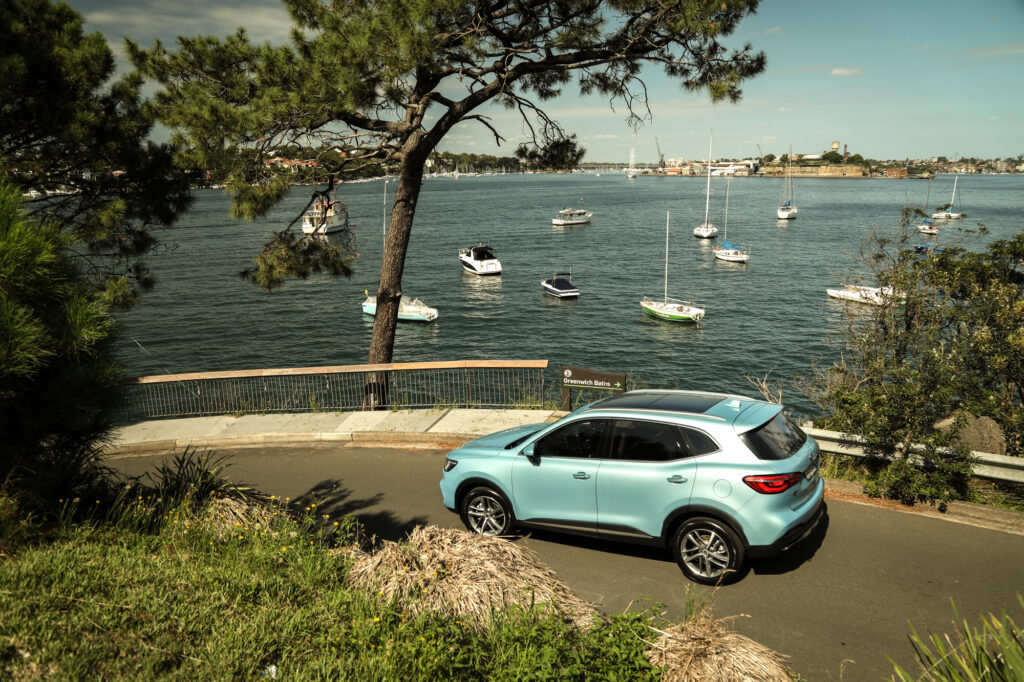
If anything those additional kilos have made the bump absorption more supple, with the additional weight seeming to help the ride quality, at least during our brief initial impressions.
It less convincing once corners enter the equation.
The body tends to lean, something that creates a sluggishness to the steering response. Turn the tiller and there are clearly things happening at ground level, but it takes a moment for the body to react and settle.
If you’re too enthusiastic the rear-end can struggle to keep up, in turn triggering the stability control electronics into action.
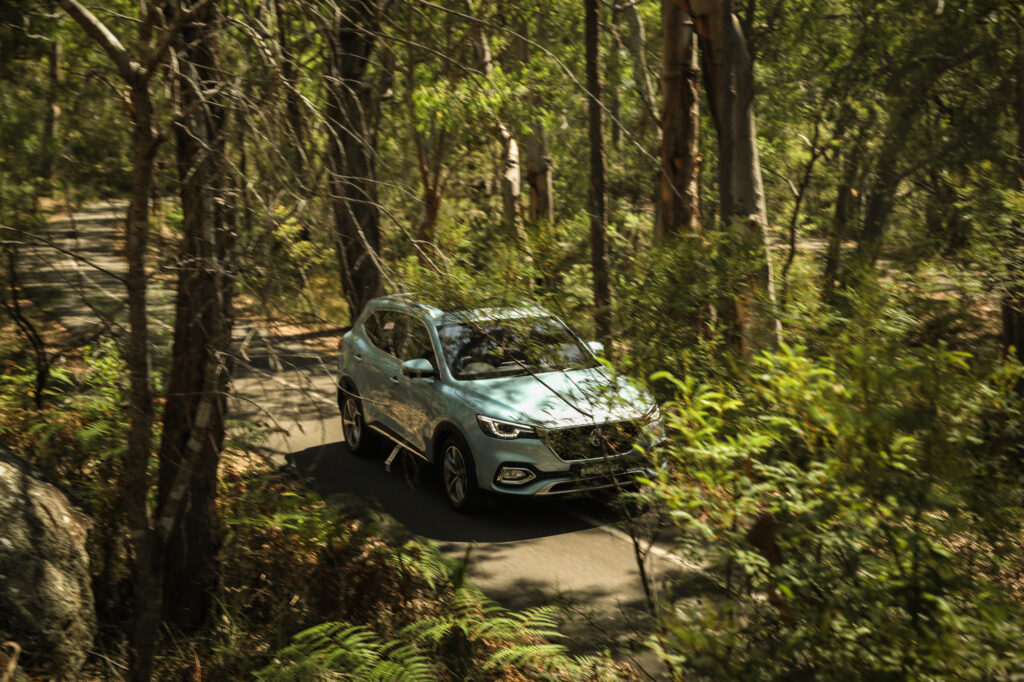
Michelin tyres do a decent job although will ultimately let out a mild squeal with above-average effort.
None of which is a major issue tooling around town and when driven more sedately.
But the HS PHEV doesn’t have the sense of reassurance and engagement of the better breed of mid-sized SUVs.
Talking point
If you need to tow something bigger than a tinnie or a box trailer the HS Plug-in Hybrid looks good on paper.
One area the HS Plug-in steps up over the regular HS is with towing. Those petrol-only models are rated to tow just 750kg, whereas the PHEV can take 1500kg.
Safety
The MG HS received a five-star ANCAP safety rating in 2019 (the five-star requirements were more stringent from 2020). The rating applies to all variants, which presumably includes the PHEV.
Safety comes courtesy of six airbags, adaptive cruise control, autonomous emergency braking (AEB), blind spot warning and rear cross traffic alert.
Verdict
The HS PHEV is at its most convincing when driven in electric-only mode, its 52km of EV range providing plenty of daily running before the petrol engine is required.

With both drivetrains in play the inconsistencies during acceleration are more pronounced.
Elsewhere there are hiccups – the infotainment and so-so dynamics the most obvious – which detracts from the style, functionality and generous splash of equipment that otherwise mount a convincing PHEV case.
2021 MG HS Plug-in Hybrid specifications
Price: $46,990 drive-away ($45,990 plus on-road costs)
Basics: PHEV, 5 seats, 5 doors, mid-sized SUV, FWD
Range: 52km (EV, WLTP)
Battery capacity: 16.6kWh
Battery warranty: 8 years/160,000km, 70 percent guarantee
Energy consumption: 1.7kWh/100km (according to a govt test; expect to use more when running on petrol only)
Petrol engine: 115kW/250Nm 1.5-litre 4-cylinder turbo
Motor: single front motor, 90kW/230Nm
AC charging: 3.2kW, Type 2 plug
DC charging: NA
0-100km/h: 6.9 seconds (claimed)

